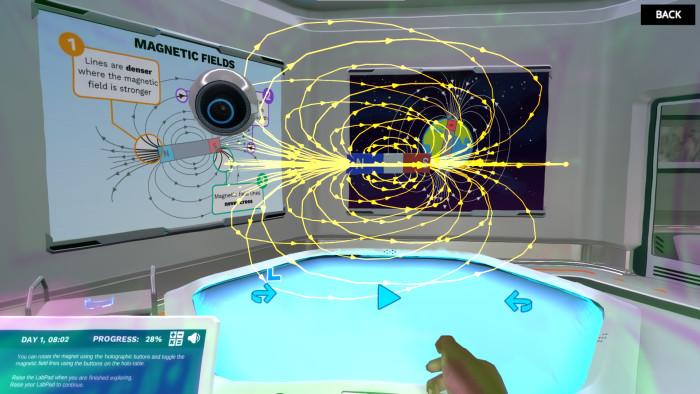
We are surrounded by a world of magnetic fields. These invisible forces drive much of the technology that fuels our modern world - from household appliances to the complex mechanisms powering magnetic levitation trains. Being an important and practical concept, the study of magnetic fields is a part of every introductory physics.
However, for some educators, teaching magnetic fields through traditional lecturing methods can be a challenging job. In response to this educational challenge, this article presents five engaging methods. These methods are designed to make the invisible visible, the intangible tangible, and the complex comprehensible.
Let’s demystify magnetic fields and illuminate the world of physics.
As educators, you are aware of the extraordinary power of 'learning by doing.' Things are better understood when done practically. So, one way to understand physics concepts is through experiments.
Another way to do that is through interactive models, which can significantly enhance students' comprehension and engagement. These models transform abstract concepts into something tangible, fostering a profound understanding. Learners can virtually manipulate variables, observe phenomena in action, and draw conclusions based on their observations.
One resource is Labster Magnetic Fields Virtual Lab, which offers students a unique and immersive learning experience. Within the simulation, they visualize the 3D magnetic fields of a bar magnet. They also unlock lab room gates by solving mini magnetic field puzzles.

The traditional model of teaching, marked by hours of lecturing, often falls short of stimulating interest and active learning. However, magnetic fields, like any scientific concept, can be more effectively learned when made fun and engaging with games.
Games and activities bring in an element of competition, collaboration, and creativity that make learning enjoyable and effective. Here are a few games and activities for making magnetic field fun:

These interactive activities empower students to become active participants in their learning journey, shifting from passive recipients of information to dynamic explorers of knowledge.
We live in a digital age, where technology shapes the way we work, play, and learn. Incorporating technology into lessons can create a more dynamic, interactive, and flexible learning environment.
From virtual reality to online simulations, technology can bring magnetic fields to life in ways that traditional teaching methods simply cannot.
Online simulations like those provided by Labster allow students to experiment and learn at their own pace, all in a risk-free virtual environment. Students can observe the invisible magnetic fields, manipulate them and then play interactive mini-games to practice their learned concepts.
Discover Labster's Magnetic Fields virtual lab today!
When students can connect what they learn in the classroom with potential future careers, the subject matter becomes more relevant and motivating. By drawing connections between the study of magnetic fields and a variety of career paths, you can inspire students and give them a broader perspective of the subject.
Some fields, such as electrical engineering, healthcare (especially radiology), space science, mining, and geology are deeply linked with the understanding of magnetic fields. Highlighting these potential career paths can help students realize the real-world significance of their learning and inspire them to delve deeper.
The fundamental science topics, like magnetic fields, are best understood when their real-world applications are mentioned. Citing real-world scenarios can make learning more relevant and interesting for students.
Educators can explain how the knowledge of magnetic fields is used in our modern word-from guiding ships with compasses, enabling data storage in computers, powering electric motors, to the advanced imaging technology of MRI in medicine.
When students explore these real-world applications, their classroom knowledge becomes more meaningful and relevant for them. This not only grounds the abstract concept of magnetic fields but also helps students appreciate their importance in our daily lives.
Magnetic fields, though invisible and intangible, are fundamental to many phenomena and technologies in our world. The methods discussed in this article are designed to awaken curiosity, encourage exploration, and cultivate a deeper understanding of the world around us.
Try our free 30-day All Access Educator's Pass today and teach with the Magnetic Fields simulation alongside 300+ other virtual labs!

Labster helps universities and high schools enhance student success in STEM.
Request DemoRequest a demo to discover how Labster helps high schools and universities enhance student success.
Request Demo